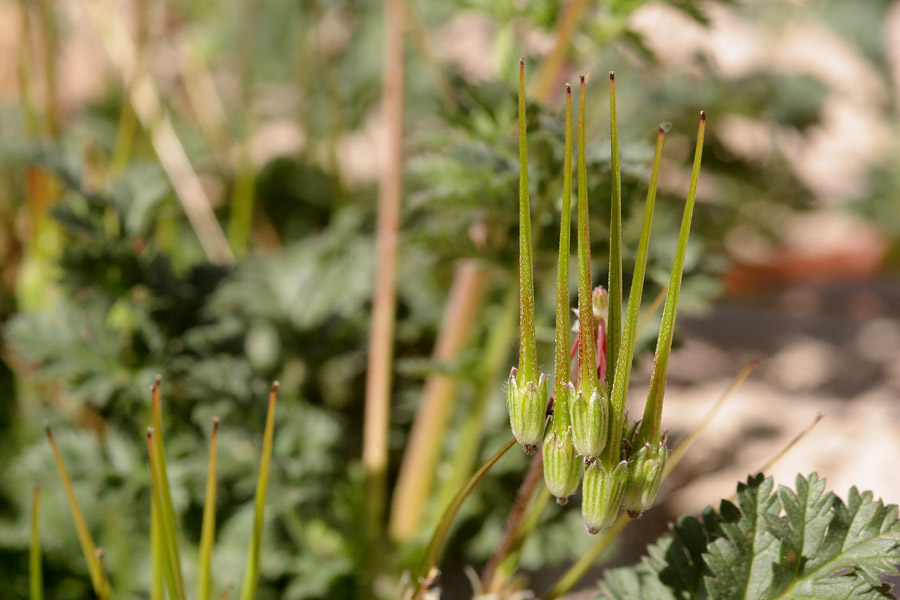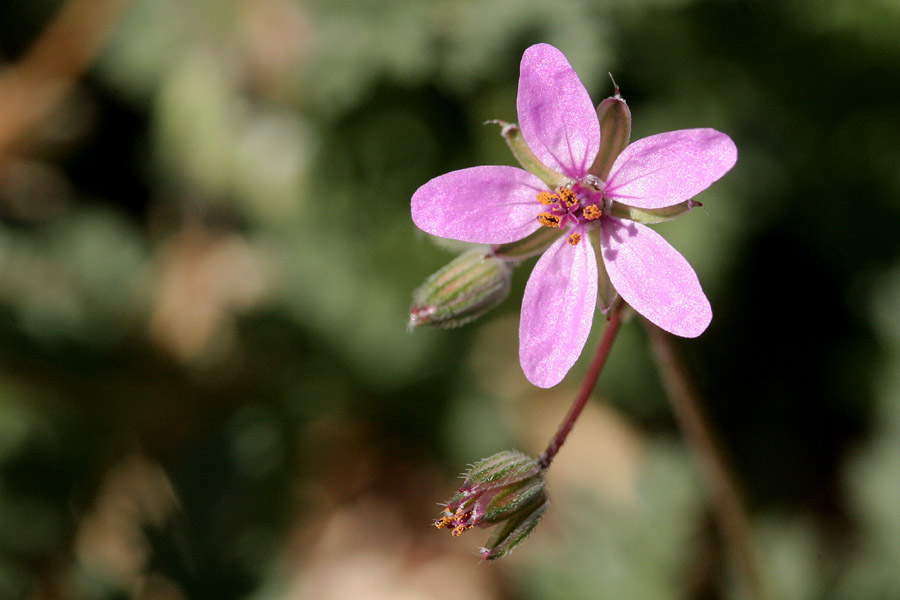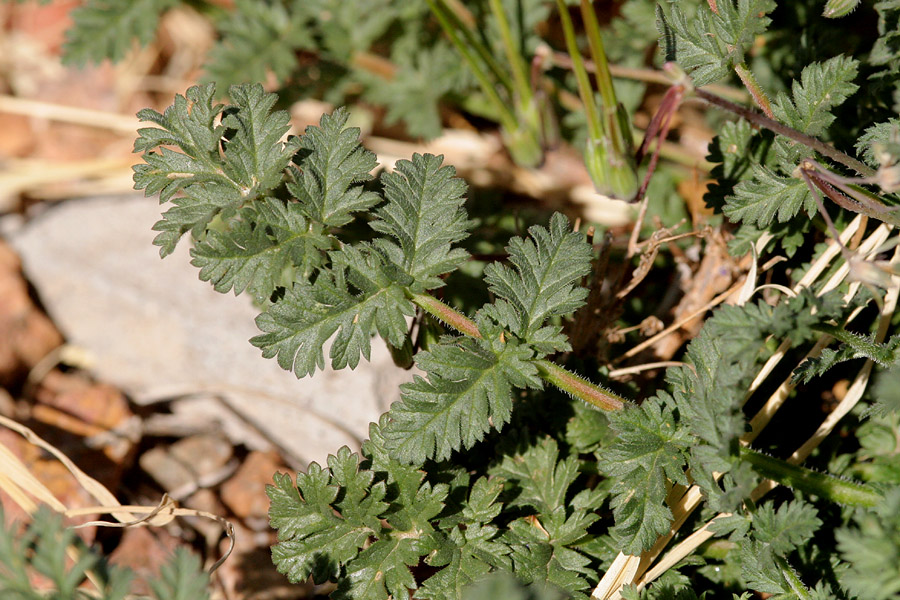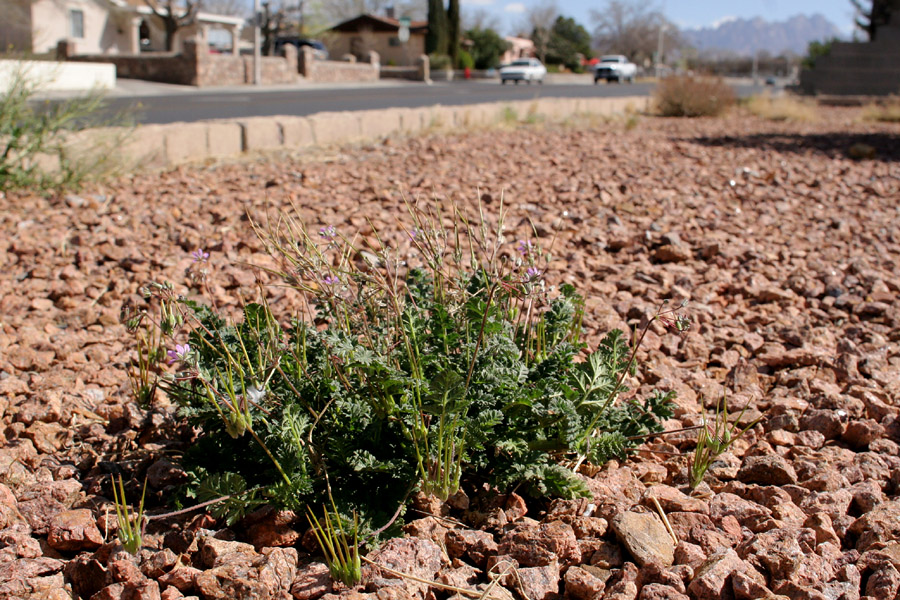Selected Plants of Navajo Rangelands
Filaree
Dahįįtiíhídą́ą́’łikaní
(a.k.a. Storksbill, Redstem filaree, Alfilaria, Redstem stork's bill)

Filaree is a low and spreading plant, 2 to 5 inches tall, growing from a central taproot. The stems are leafy and hairy. Filaree flowers February to May, and plants usually dry up and disappear quickly after maturity. It is one of the first plants to germinate in late fall or spring. It reproduces from seeds. Borne on hairy stalks in umbrella-shaped clusters, flowers vary in color from pink to purple. Each seed is tipped with an elongated tail, which coils spirally at maturity, assisting the pointed seed in penetrating the soil. In early growth stages, the leaves form only a basal rosette, but later appear on the stems.
Filaree is found in oak woodlands, semidesert grassland, and desert shrublands. It is often found in fields, lawns, and wasteplaces. It is adapted to a broad range of soil types. It grows in well-drained, clayey, loamy, or sandy soil, and is tolerant of moderately acidic to moderately alkaline soils. It furnishes excellent to good spring forage for cattle, sheep, desert tortoise, and other wildlife. It can also provide winter forage if the seeds germinate following fall rains. It has, however, been reported to cause bloating in livestock.
Young leaves can be eaten raw or cooked. Filaree is reputed to contain an antidote for strychnine. The presence or absence of filaree pollen in fossil records, sediment lakebeds, and artifacts has been used as a dating technique in paleobotany and archeology. Filaree was one of the first exotics to invade North America. It is an aggressive invader of desert ranges under heavy grazing.
*Description courtesy of Utah State University Range Plants of Utah.




Copyright 2018 New Mexico State University. Individual photographers retain all rights to their images. Partially funded by the Western Sustainable Agriculture Research and Education Program (westernsare.org; 435.797.2257), project EW15-023. Programs and projects supported by Western SARE are equally open to all people. NMSU is an equal opportunity/affirmative action educator and employer..
NMSU does not discriminate on the basis of age, ancestry, color, disability, gender identity, genetic information, national origin, race, religion, retaliation, serious medical condition, sex (including pregnancy), sexual orientation, spousal affiliation or protected veteran status in its programs and activities as required by equal opportunity/affirmative action regulations and laws and university policy and rules. For more information please read the NMSU Notice of Non-discrimination (opens in new window).

